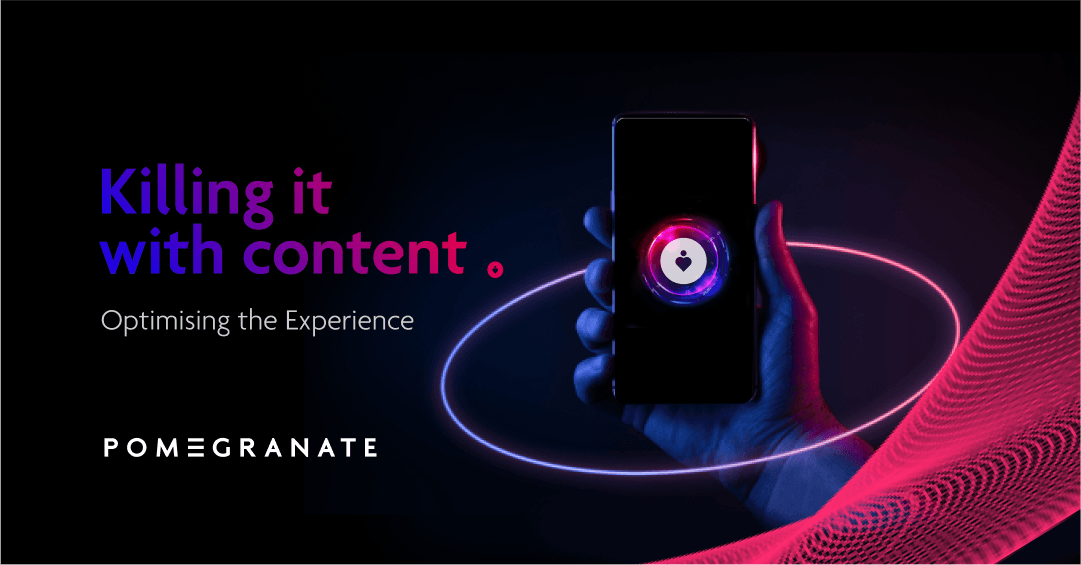WordPress powers over 40% of all websites¹, yet content teams are often trapped in editing nightmares plagued by plugin chaos, rigid layouts, and over-reliance on developers.
That's where headless WordPress comes in, offering a solution that keeps the WordPress experience clients know and love whilst delivering the performance modern websites demand.
But there are still hesitations to make the switch.
We sat down with Vitalijs Lobins (aka Vic), Lead Developer at Pomegranate, to explore what's holding teams back and our solution that's helped clients overcome it and soar with headless WordPress.
Vic, what makes traditional WordPress so painful for content teams?
Well, first off, we have to acknowledge that WordPress has evolved and grown massively. It holds over 60% of the CMS market share² because it's open source, which means it's free to use, not gated, and incredibly scalable.
And developments like Gutenberg and full site editing have really revolutionised content creation in this space. So when it's done well, it's a really powerful platform.
However, what we see time and again is that WordPress sites are often poorly set up, with multiple plugins and rigid layouts. I remember one client who had over 40 plugins, which made it made it almost impossible for their team to know how to edit things.
The downfall of a poorly set-up WordPress site is that content teams lose autonomy, developers become bottlenecks, and agencies end up firefighting instead of creating value for their clients.
How does headless WordPress solve these traditional limitations?
Well, headless WordPress reduces the need for multiple plugins—with headless, you only ever require a couple. It also separates content management, the WordPress backend that editors love, from content delivery through modern frontend frameworks like Next.js.
Whereas traditional WordPress generates pages dynamically on each request—querying the database, processing PHP, and assembling the HTML output—which can create performance bottlenecks under high traffic, increase the attack surface for security vulnerabilities, and present scaling challenges.
So with headless WordPress, you get static site generation that eliminates database calls during page loads, better performance, enhanced security, and flexible content delivery across multiple channels.
Essentially, you maintain WordPress's editing familiarity while unlocking modern web capabilities.
So what stops more agencies and clients from making the switch?
Well, the reason a lot of agencies, developers, and clients don't use WordPress headlessly is that the content editing aspect is hard to wrangle.
Traditional headless WordPress forces clients' content teams to edit blind; there's no real-time preview of what they're building. Meaning, they have to constantly switch between the WordPress admin and the live site to see changes.
While there are enterprise solutions, from companies like Storyblok, Payload, and Strapi, that provide a plugin for this preview functionality, these features are often gated behind enterprise-level pricing.
How did you solve this problem with your Nextpress plugin?
We've created true WYSIWYG editing where content creators see exactly what visitors will see. Our plugin uses advanced preview technology that renders components exactly as they appear on the live site, with intelligent loading optimisation to ensure smooth performance.
The real breakthrough here is that we've eliminated code duplication entirely. Traditionally, you'd have to build blocks twice, once for the frontend and once for the backend preview. With Nextpress, you only build once, and our system intelligently connects to your live frontend architecture.
While all the other preview plugins charge a hefty price for this premium functionality, our approach is an affordable option that enables content autonomy for teams and delivers enterprise-level capabilities to our clients.
Can you share some real results from client implementations?
Absolutely. Take our latest work on Glion's new website, where we migrated them from a plugin-heavy WordPress site to a headless architecture with Next.js.
Their team no longer required developer involvement for layout changes, and true WYSIWYG editing meant no surprises between editing and publishing.
We gave their content team complete independence.

What's your final advice for agencies and clients, and why does this change everything for WordPress's future?
WordPress is still the most popular CMS out there, but going headless is what will keep it relevant for the next decade.
And now that its biggest challenge can be solved with open-source preview plugins like ours, the opportunities are almost limitless.
Ultimately, headless WordPress provides clients with precisely what they need in the modern age: enhanced performance, improved security, and greater control over their content.
If you're ready to break free from your current WordPress set-up, speak with our development team today.
References
1. W3Techs. (2024). Usage statistics of content management systems.
- Kinsta. (2024). WordPress market share statistics and trends.





